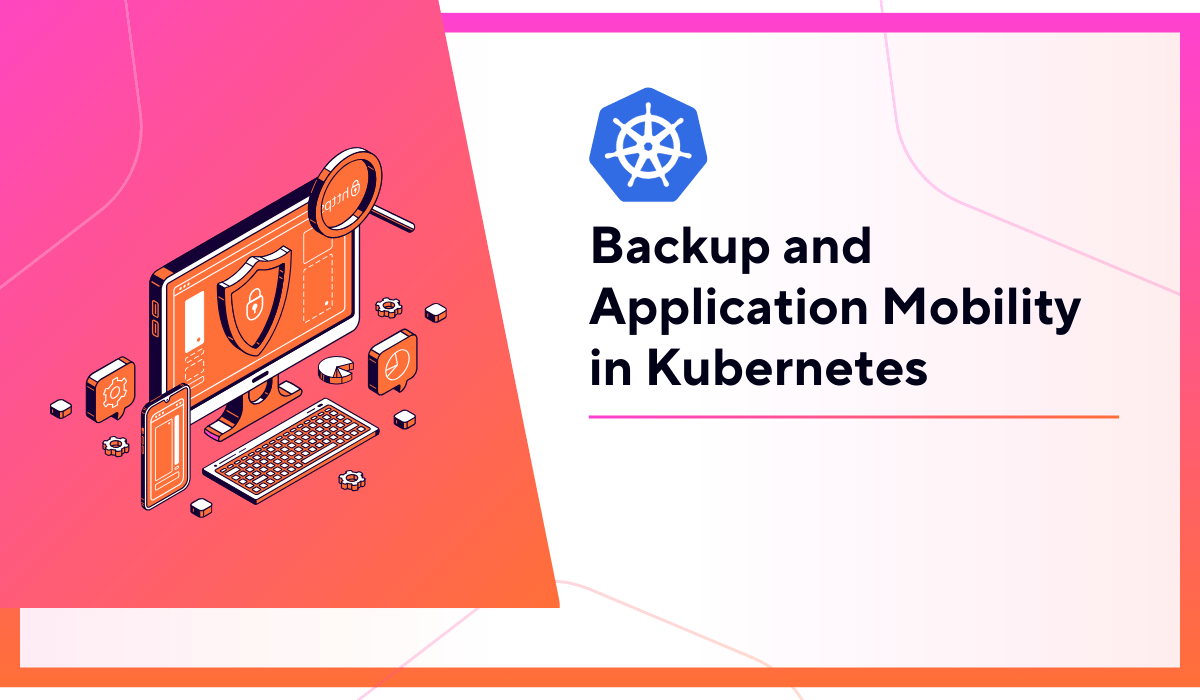
With technological advancements in IT infrastructure, microservices-based applications are evolving to Kubernetes platforms that bring revolutionary advanced features to the monolithic traditional virtualization approaches still in use today. As organizations adopt container-based approaches, today’s IT operations have become more agile and high-quality with the combination of Devops and ITops teams.
Applications developed with artificial intelligence and machine learning have brought data to an important position for all organizations with the expansion and adaptation of container-based platforms. In the light of all these technological advances, organizations now have to undergo strict audits to register that their data is protected, as software, running applications and data may be exposed to various cyber attacks or unplanned interruptions. Operational teams are now forced to support their infrastructures and applications, including relational and Nosql database hosting workloads that they have converted to traditional, virtual and containerized structures, in Cloud-native environments.
Deployments in Kubernetes environment need to be able to integrate with local data centers, different cloud environments and data storage manufacturers and their solutions. The data management solution to be used should focus on the needs of both operators and software developers and be capable of keeping up with the ever-changing environment. Unlike past infrastructure solutions, Kubernetes deployments have created significant changes in the nature of IT. In parallel with these developments, Kubernetes deployments require data protection techniques that understand the nature of the container architecture (defined as Kubernetes-native backup).
Check out the Kubernetes Backup Best Practices: https://devopstipstricks.com/kubernetes-backup-essentials-best-practices-and-examples/
7 Critical Things to Consider When Backing Up a Kubernetes Environment
Kubernetes Deployment Model
Unlike traditional architecture, Kubernetes deployments are not mapped to servers or virtual machines. Therefore, the backup solution used needs to understand the nature of Kubernetes-native environments, which can change rapidly.
Devops and Shift-left
A very fast application development cycle is a standard of Kubernetes environments. Therefore, backup software should be application-centric, not infrastructure-centric.
Kubernetes Operator Challenges
Operational operations of IT teams need ease of use. Therefore, it is critical that the backup solution has integrated CLI access and API-supported dashboards.
Application Scaling
Kubernetes-based microservices approaches have hundreds of independent components and loops that are only visible to Kubernetes. For applications to run a consistent operation across so many different components and loops, it is imperative that these components are backed up.
Protection Shortcomings
Data corruption and unexpected data loss can be managed with high availability and replication solutions. A backup solution that works transparently in the background, independent of applications with different features, is necessary to avoid these scenarios.
Security
Kubernetes security feature prevents access to internal application components. At the same time, unsecured access to data services inside or outside the cluster must be prevented. With an advanced backup solution, a consistent process for security operations can be ensured.
Ecosystem Integration
The use of multiple data services by the same application is a feature of Kubernetes deployments. A backup solution that can integrate with cloud-native infrastructures and capture application requirements along with the flow of workloads is key for the organization.
The principle of data management in container-based environments that IT organizations are using has made a backup solution that is compatible with all Kubernetes environments and has its own advanced features a critical requirement. Kasten K10 is designed specifically for Kubernetes. It provides enterprise operations teams with an easy-to-use, scalable and secure system for backup, restore, disaster recovery and mobility of Kubernetes applications.
In line with the aforementioned features, a general assessment of Veeam use cases reveals the following topics: backup and recovery, disaster recovery and application mobility.
Backup and Recovery: Veeam makes it possible to automatically capture and protect the entire application stack, including resource definitions, configurations and underlying data.
Through dynamic policies assigned to automatically discovered applications, backups can be managed at scale, data management compliance can be monitored and corrective actions can be easily implemented.
In cases where volume-level protection is not sufficient, it is also possible to extend the workflow with a Canister scheme to apply application-specific actions.
Disaster Recovery: Enables planning with the help of RTO and RPO values required by business requirements and application-specific scheduling and on-demand flow options.
In the case of a new application export, it automatically imports the changes into the disaster recovery cluster, enabling import and restoration of the latest versions.
The Disaster Recovery function offers the option to extend the workflow with a Canister scheme to perform application-specific operations when unit-level protection is not sufficient.
Application Mobility: Eliminates the need for custom scripting, tightly schedules applications, configures them according to business requirements and provides the ability to monitor operational processes from the Kasten interface.
Veeam provides seamless data conversion between infrastructure formats for application version migrations, infrastructure changes, load balancing and test/automation needs, making migrations across different public or private cloud infrastructures reliable and fast.
Check out the Kubernetes Backup Solutions: https://devopstipstricks.com/unlock-data-resilience-with-kubernetes-backup-solutions/